In 1986, Hong Kong photographer Basil Pao fell into the job of recording the behind-the-scenes activities on the sets of Bertolucci’s The Last Emperor — filmed inside the gorgeous precincts of the Forbidden City in Beijing. The photos are finally out in the form of a book. Mariella Radaelli reports.
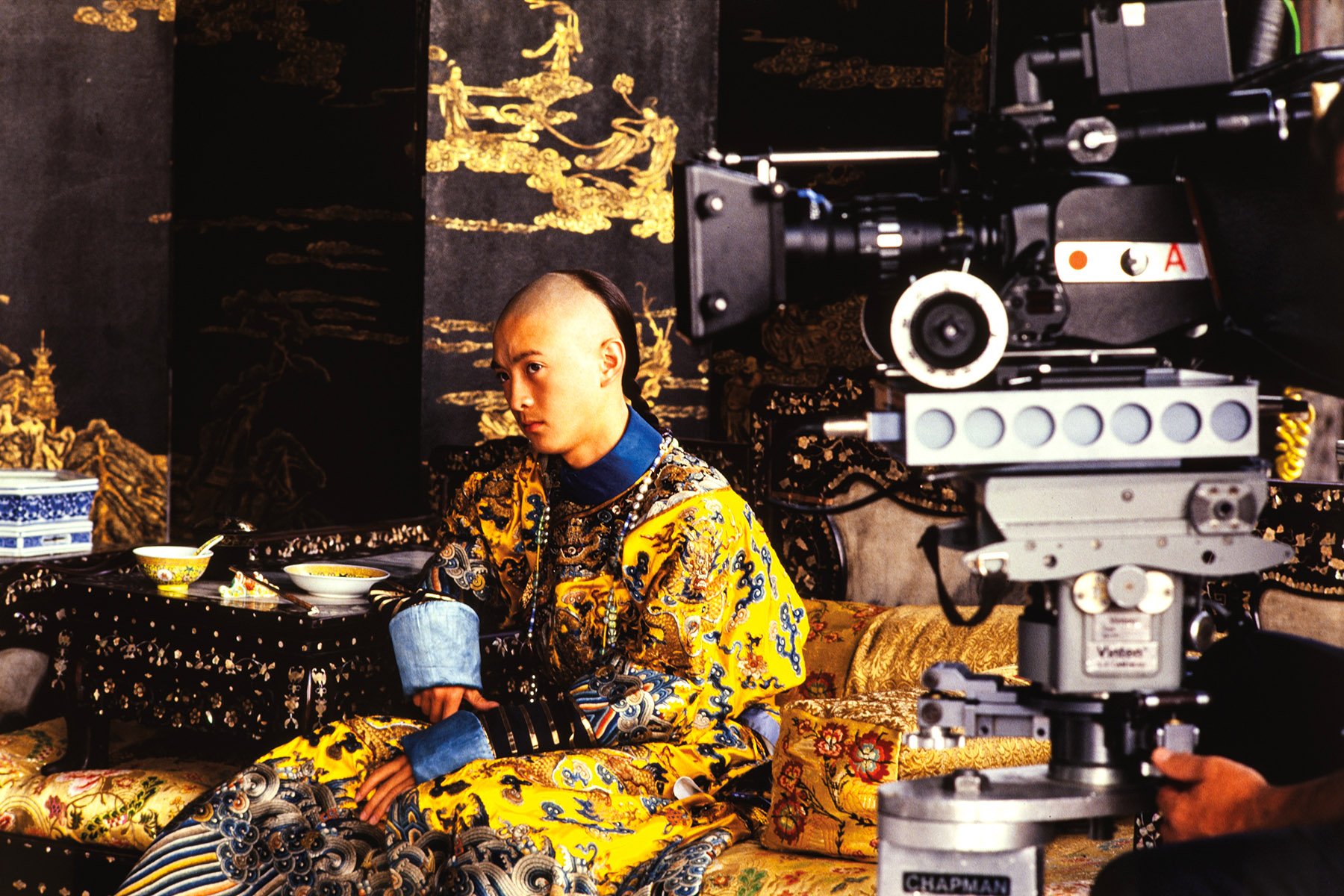
In 1986, Basil Pao, a photographer and graphic designer from Hong Kong, arrived in Beijing to join Bernardo Bertolucci’s film crew. They were shooting the lavishly mounted biopic The Last Emperor — a film that would be released the following year and go on to win nine Oscars.
Pao was cast as Prince Chun — the father of Aisin-Gioro Puyi (1906-67), the last emperor of China. Bertolucci’s script was inspired by Puyi’s autobiography, From Emperor to Citizen (1960). It was the first time the People’s Republic of China had authorized a feature film — and a project directed by an Italian and produced by American and British film companies at that — to be shot inside the Forbidden City.
READ MORE: Preserving the pages of history
Once his job in front of the camera was done, Pao was encouraged by the film’s producer, Jeremy Thomas, to record some of the film’s behind-the-scenes activities, as the unit’s designated still photographer, Angelo Novi, did not have the time for it. Pao took tens of hundreds of photos during his time at the Forbidden City. More than 250 of those images have gone into The Last Emperor Revisited, published recently by the Hong Kong University Press.
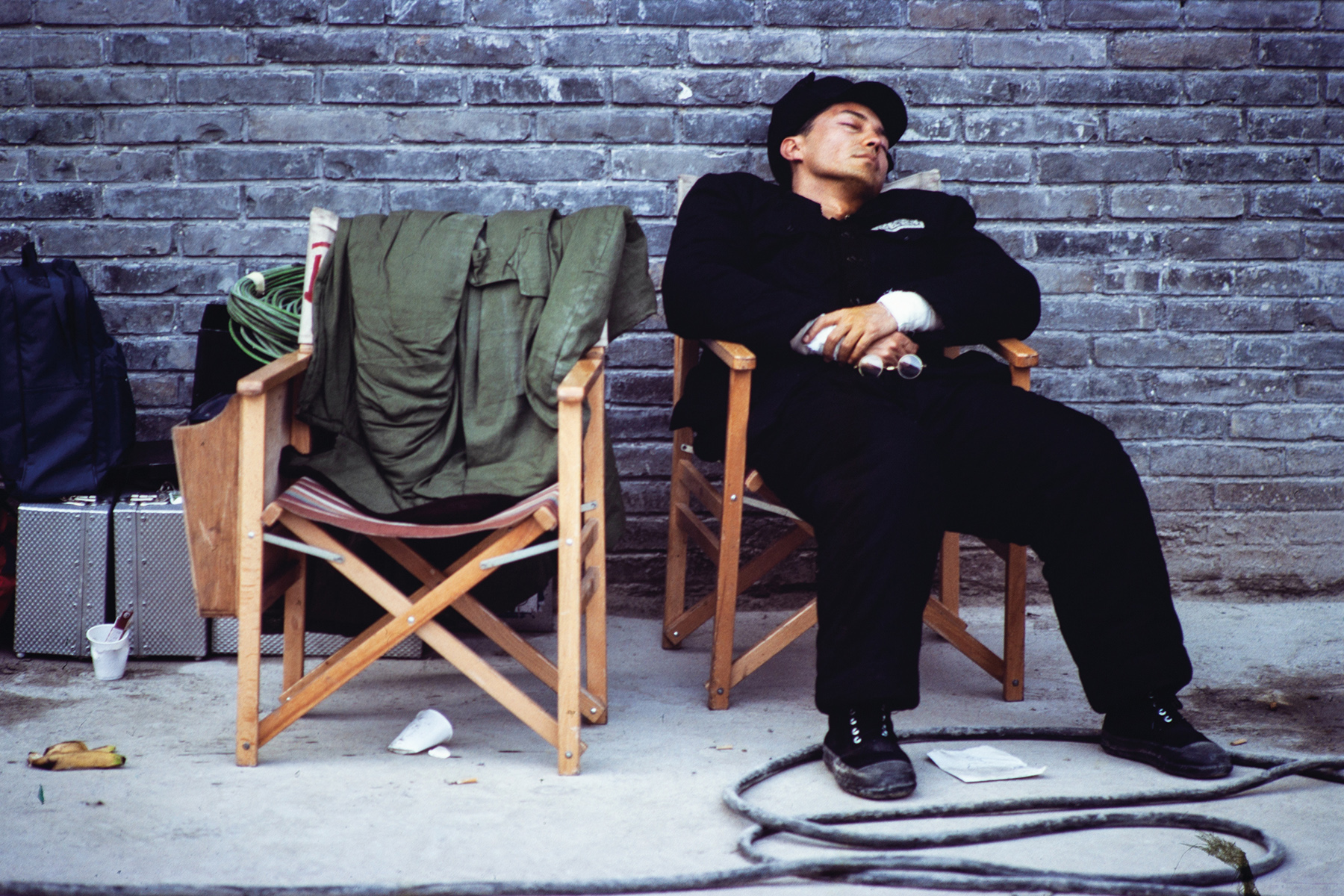
Emotionally intense
The book offers an unfiltered look at life on The Last Emperor’s sets in between takes. Most of the photos are candid shots of the cast and crew. That of an elderly extra squatting down on the ground, dwarfed completely by the giant bronze water pot standing next to him on the courtyard, or an actor in her elaborate lady-in-waiting costume and headgear leaning against a pillar with her gaze fixed on something outside the frame — to give just two examples — seem to encapsulate entire stories in a single frame. Pao seems as interested in the moods and momentary gestures displayed by random individual figures on the set as he is in the magnificent coronation scene involving hundreds of extras.
His celebrity portraits present rich and pure, humanized versions of the larger-than-life figures on the sets of The Last Emperor.
Standing on the roof of a Forbidden City palace with some of his crew members, Bertolucci appears to be ecstatic, or, as Pao calls it, “in his happy place”, enjoying a feeling comparable to “floating in the air, as he kept searching for his next shot”.
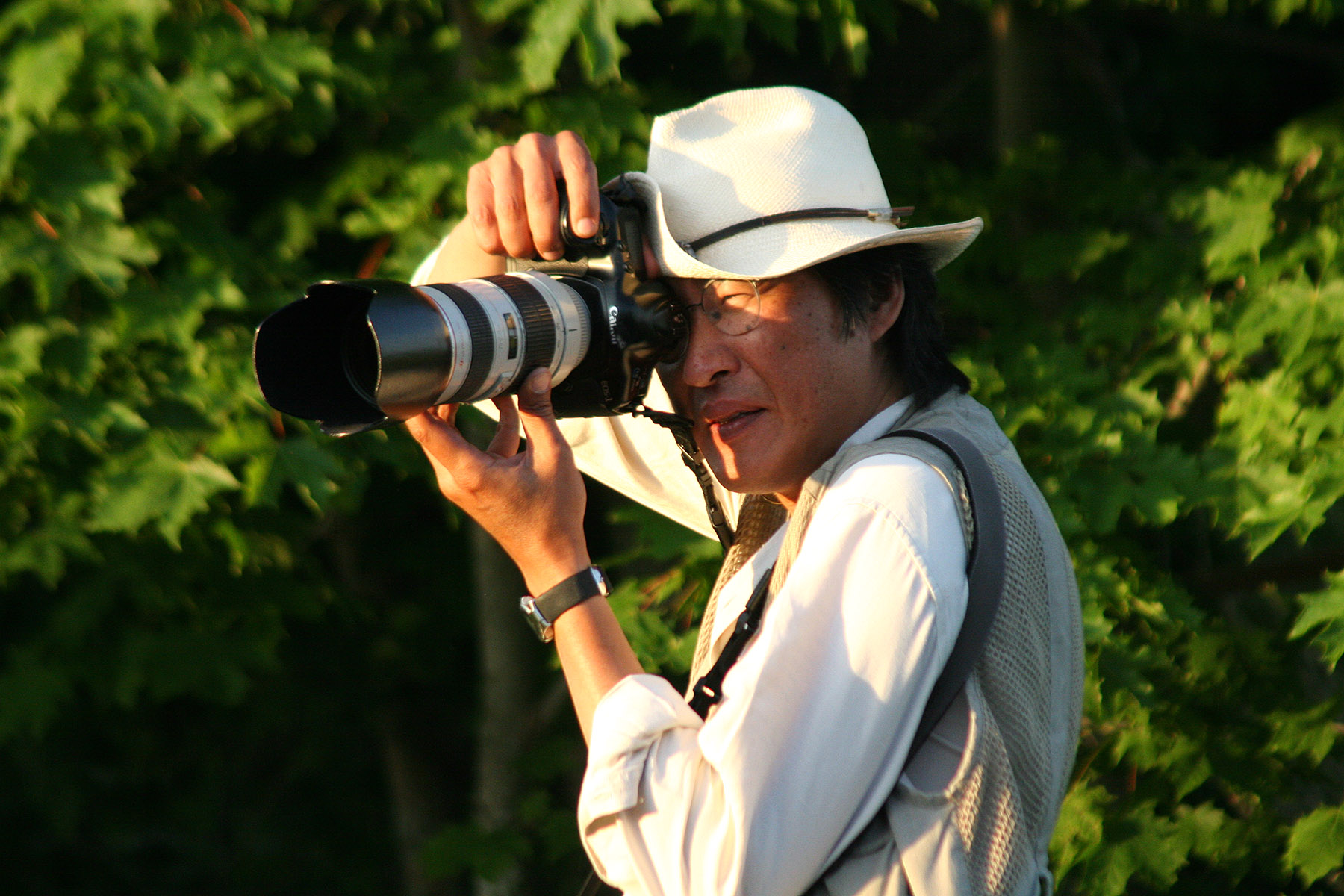
Lead actor John Lone, dressed as Prisoner 981 — Puyi’s identification number at the time he was held at the Fushun War Criminals Prison in Liaoning — is photographed taking a quick nap in between takes at the Beijing Film Studios.
“Basil has a sharp gaze,” comments Valentina Ricciardelli, president of the Bernardo Bertolucci Foundation and a cousin of the Italian director. “He possesses a true artist’s sense of beauty and the ability to convey emotions and atmospheres. His work is exciting and moving.”
Pao himself sounds grateful for the opportunity. “I got to spend time with the unsung heroes of the film,” he says. Hanging out with “the artists and sculptors who created the reimagined interiors of the Forbidden City palaces as well as some of the most talented and hard-working craftsmen and women I have ever known in the costume, hair, and the make-up departments” meant that Pao had ample time to observe his subjects and freeze the moments worth cherishing.
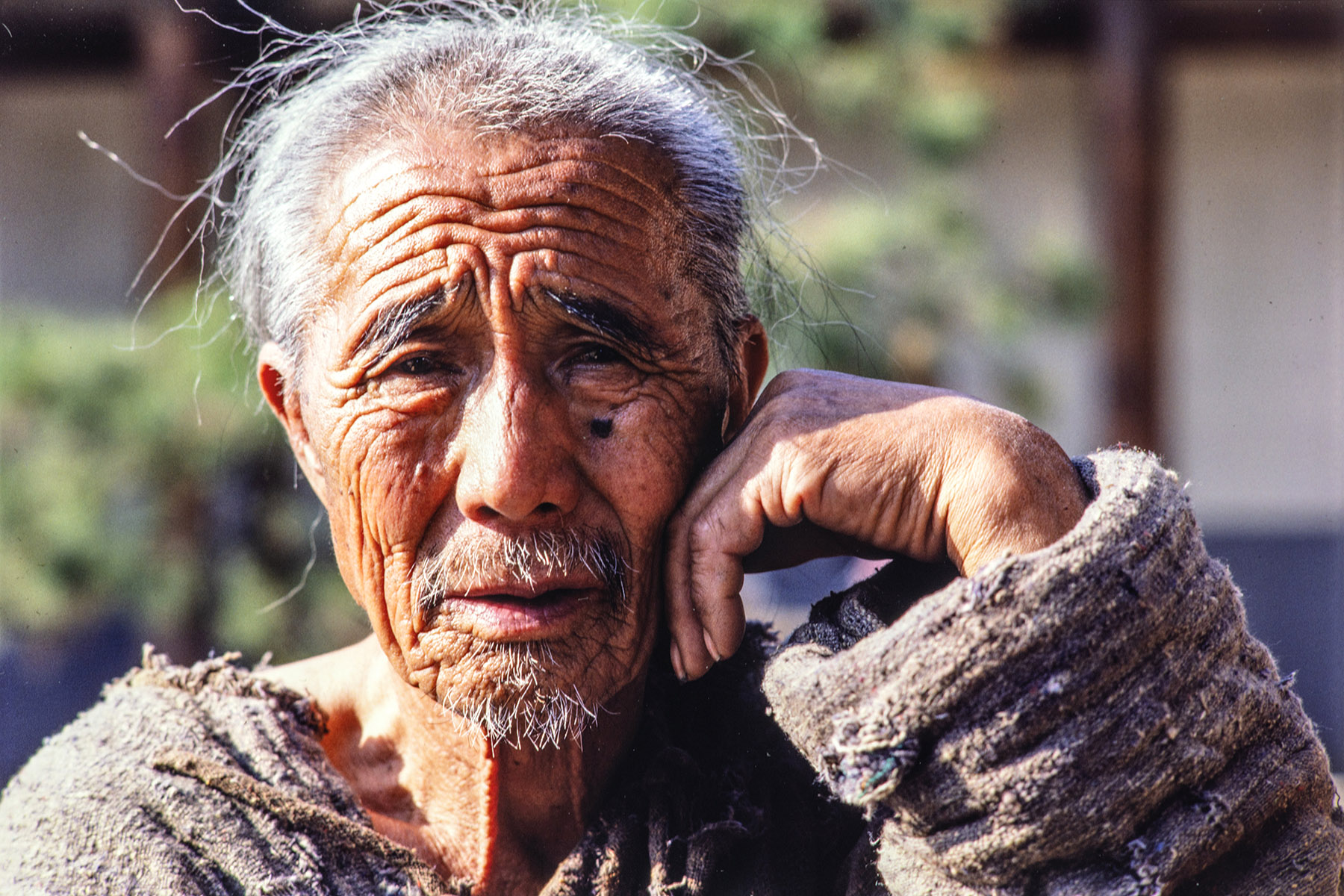
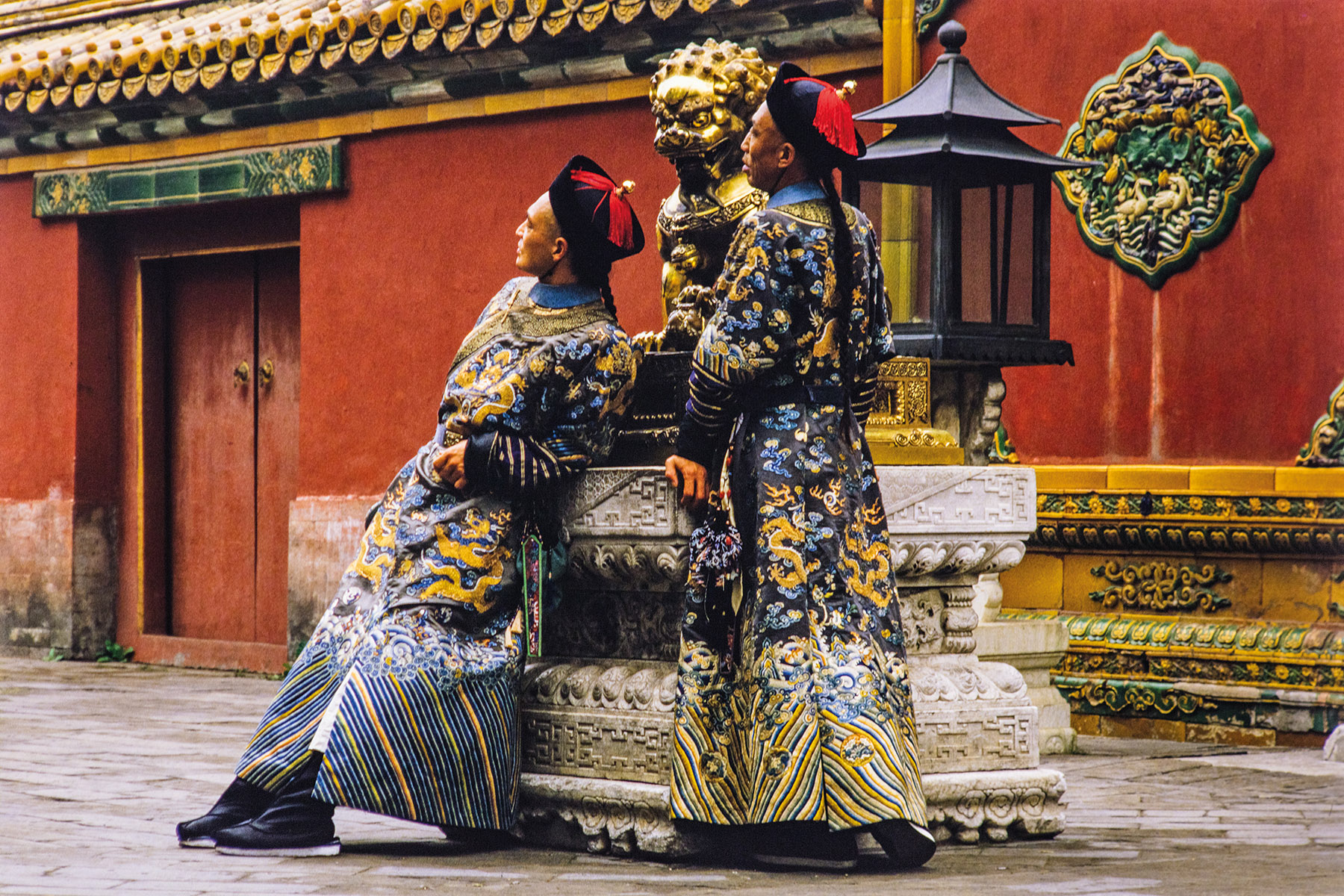
Extra sensitive
His portraits of extras who play anonymous characters, appearing only fleetingly in the film, are highly accomplished works of character study.
Be it elderly people, or rickshaw drivers carting passengers through a re-created version of a dusty street in old Peking, Pao is often quick to recognize wisdom and quiet strength in the most weather-beaten faces. “I was able to listen to the stories of their struggles and suffering and also about their hopes for the future,” he says.
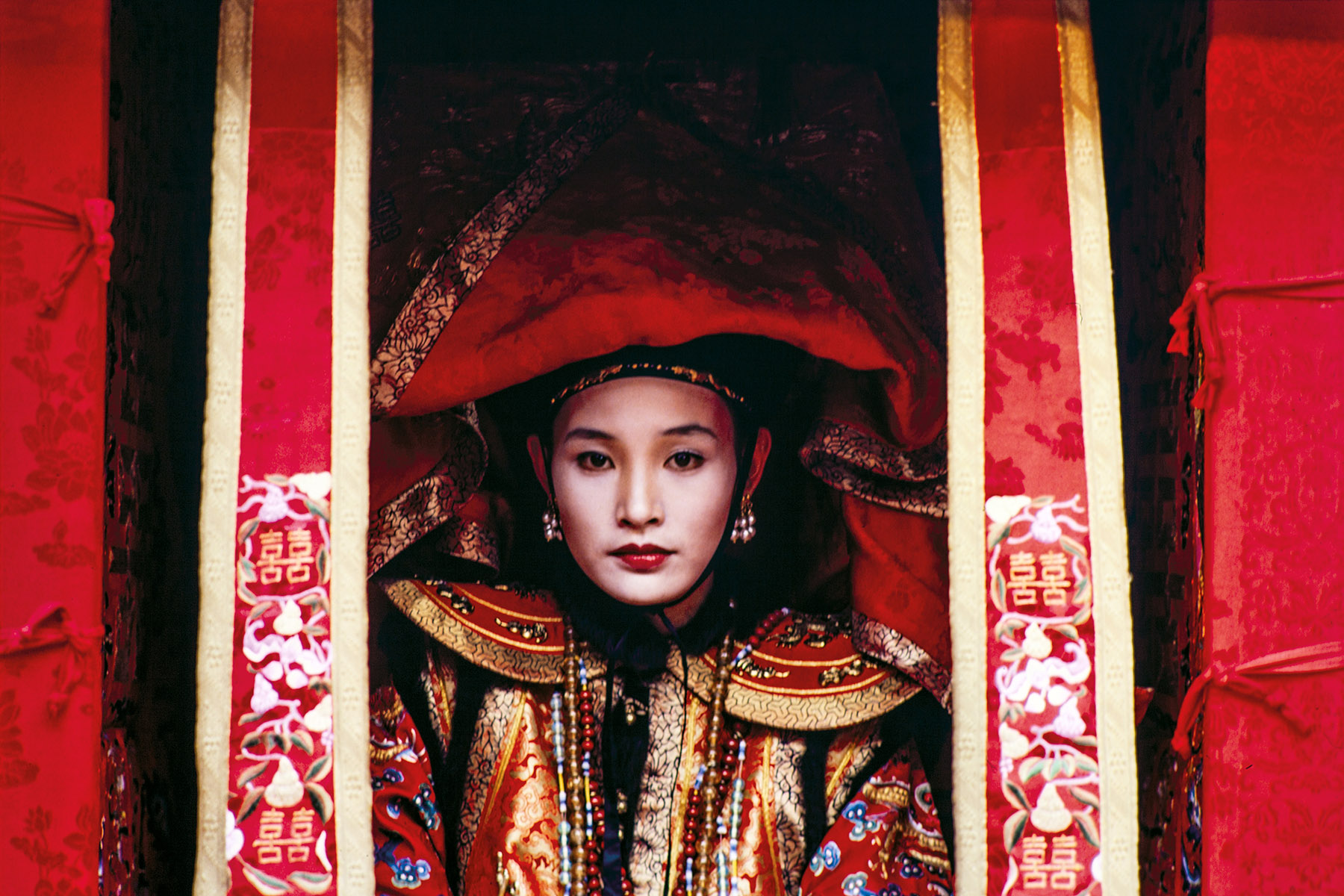
“The last few images of the extras are so beautiful,” says Ricciardelli. The snapshots of the elderly people and children remind her of the peasants in another Bertolucci film, 1900 (1976).
“Being able to admire the beauty of James Acheson’s costumes, Ferdinando Scarfiotti’s sets, and the atmosphere in those amazing scenes at the Forbidden City through the images of an artist like Basil is an incredible experience,” she adds.
The film’s producer, Thomas, who gave Pao the photography gig, has written one of the book’s four introductions. “This is a beautiful, well-composed, and well-edited object, and the inclusion of call sheets gives a real sense of the film’s progression through photographs,” he says.
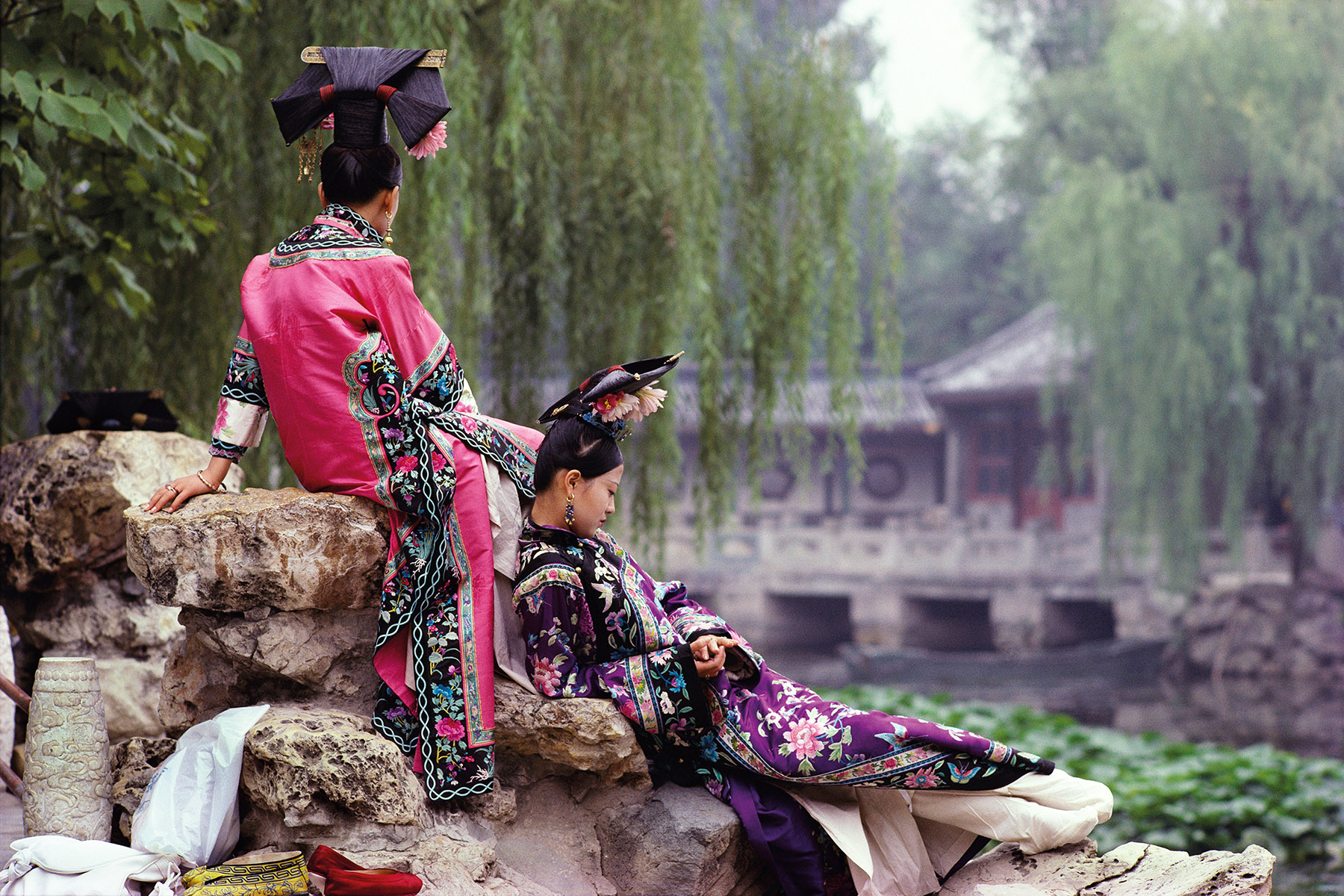
Soaking in the vibe
When Pao first met Bertolucci at Hong Kong’s Mandarin Hotel in 1984, he was already a fan. “My first encounter with the collective vision of the ‘sacred triumvirate’ — director Bertolucci, cinematographer Vittorio Storaro, and production designer Scarfiotti — happened when I was an 18-year-old student in Los Angeles, writing an essay on The Conformist (1970) for my film aesthetics class,” Pao says.
He had a faint resemblance to Puyi, a fact that did not go unnoticed by Bertolucci. Yet the role went to Lone, who had trained in Peking Opera in Hong Kong. Pao ended up playing his father. It was a small role that took only a few days to shoot, leaving him with free time.
Thomas was pleased with the results of the task he had set Pao with. He believes Pao succeeded in capturing the vibe on the set.
“Basil had a unique point of view, being Chinese and yet educated partly in the UK. He understood what to capture in order to satisfy, and he certainly absorbed the atmosphere of the set and the drama,” Thomas says.
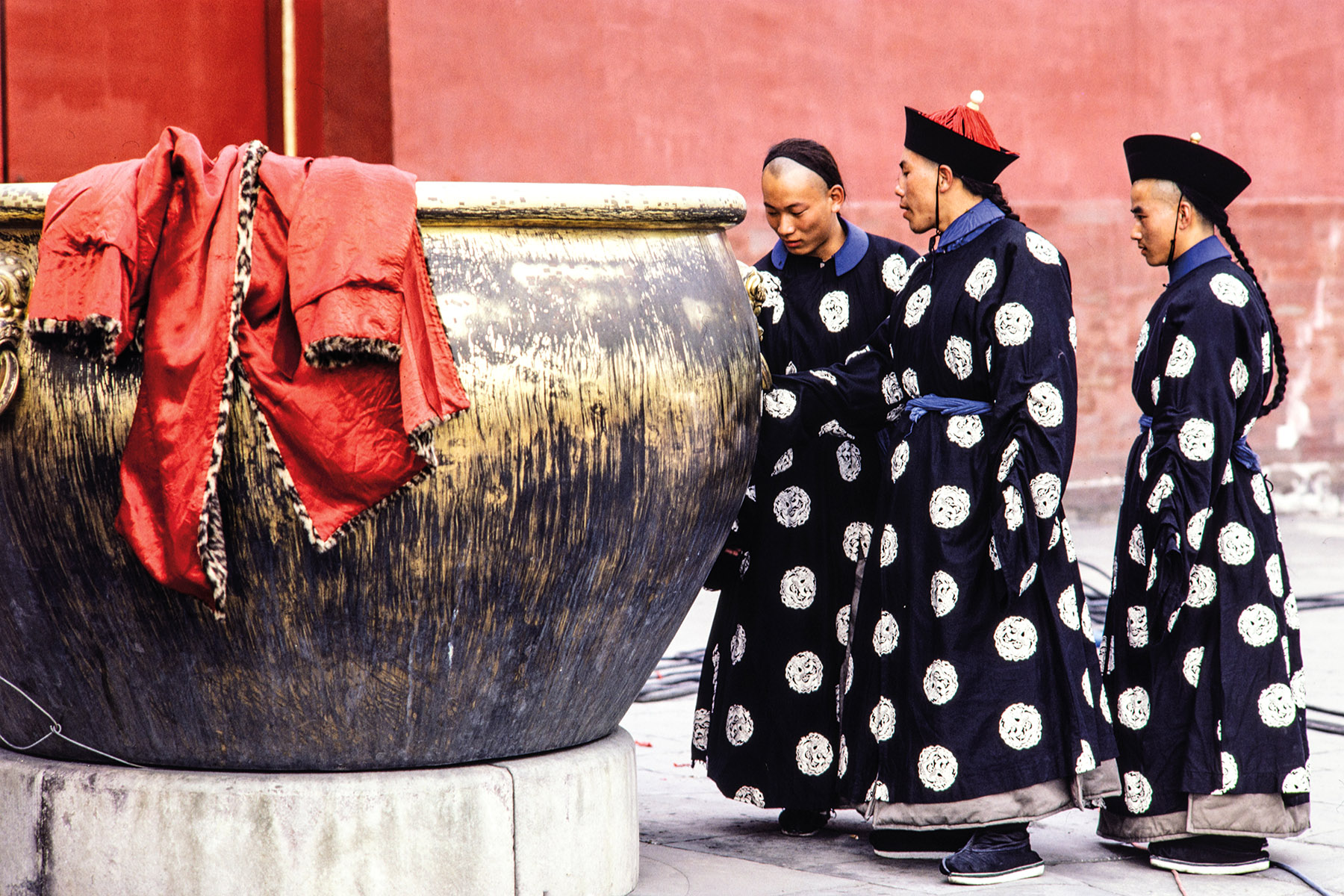
The right moment
Why has it taken this long to publish the book, though?
Thomas says The Last Emperor’s release was followed by a number of illustrated publications on the film. “It’s only now, with the hard work put in by Basil and the publisher, that we can reassess the magnitude of what we did in an era before digital manipulation.”
In a sense, the book’s release is timely. “We’ve just restored The Last Emperor in 4K, so it makes a very nice companion piece,” says Thomas.
On a personal level, the publication stirs fond memories. “It was a life-changing experience,” he recalls. “We got permission to film in China in 1985 and received enormous support. It was a challenging film to make, but I was so inspired by the complicated nature of what we were doing, and the results were magnificent.”
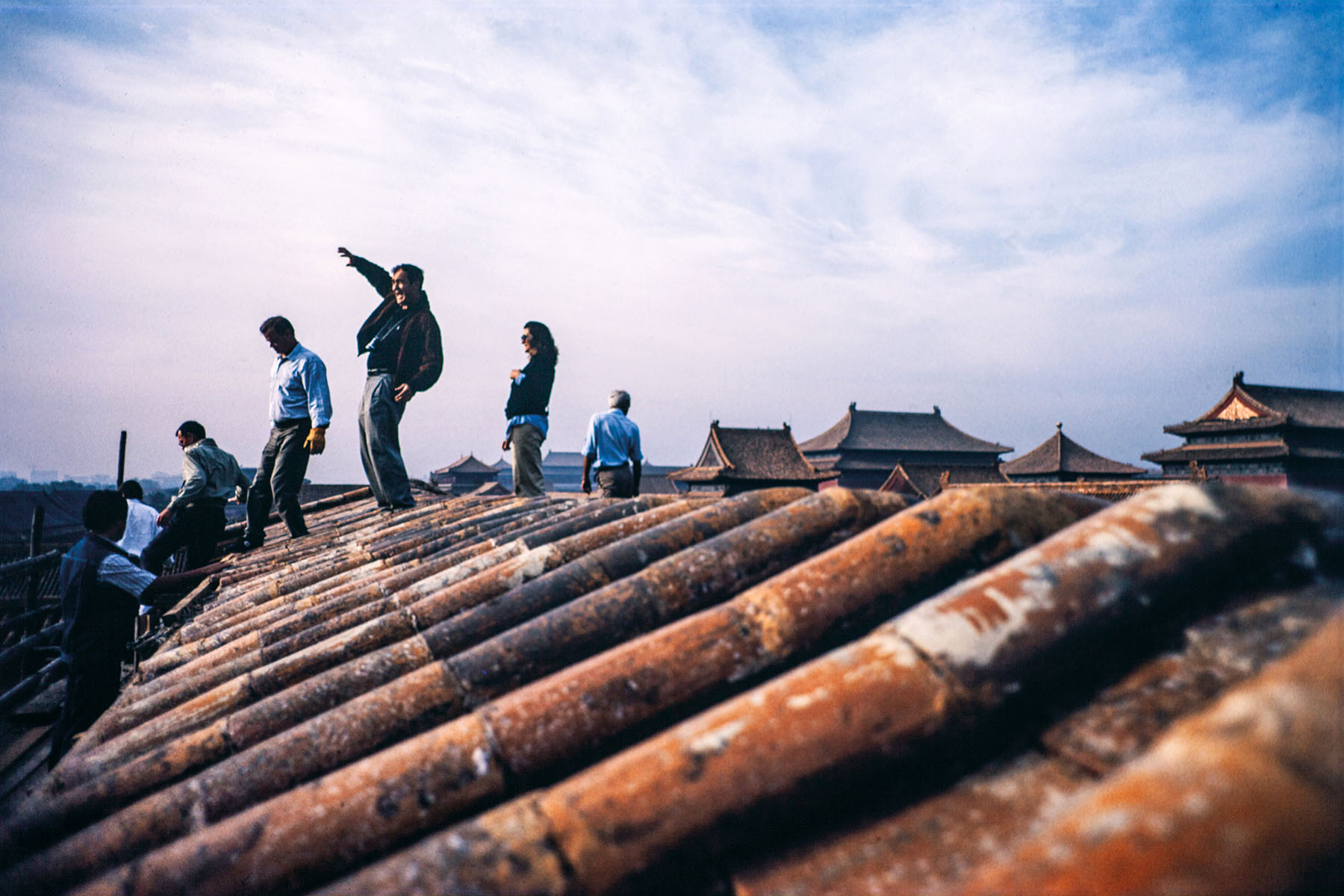
Pao met Bertolucci for the last time at the 2013 Venice Film Festival. Thomas and the film’s composer, Ryuichi Sakamoto — Pao photographed him perched on a railing of one of the iconic marble bridges at the Forbidden City — were there as well. “Though Bernardo had been wheelchair-bound for a decade and Ryuichi was struggling with a stubborn cancer, their eyes still sparkled with intelligence, and their minds were as sharp as ever,” he recalls. “The mood may have been a bit somber and laughter harder to come by; still, it was wonderful to reunite with The Last Emperor family. The book is my tribute to them and all my non-conformist friends in the film.”
ALSO READ: Exhibition showcases Tang and Song dynasty arts
Ricciardelli believes Bertolucci would have been pleased with the book. “He greatly respected Basil. Seeing his work celebrated in such a poetic way would undoubtedly have made him smile with joy.”
If you go
The Last Emperor Revisited
Photographs by Basil Pao; introductions by Jeremy Thomas, Vittorio Storaro and James Acheson
Hong Kong University Press
Price: HK$395 ($51)
hkupress.hku.hk/The_Last_Emperor_Revisited


